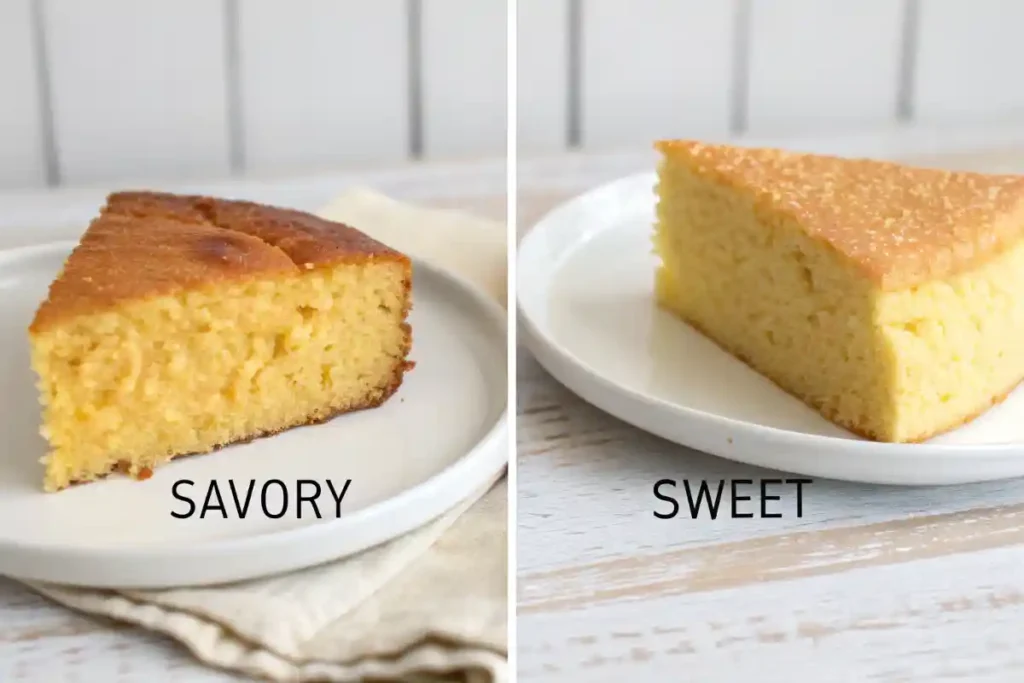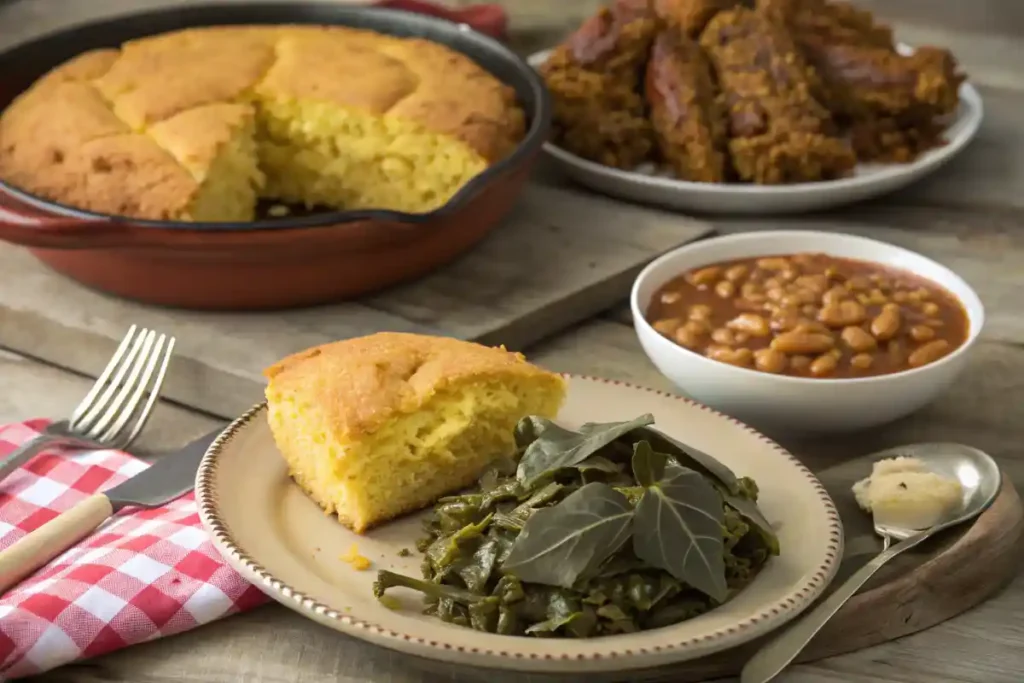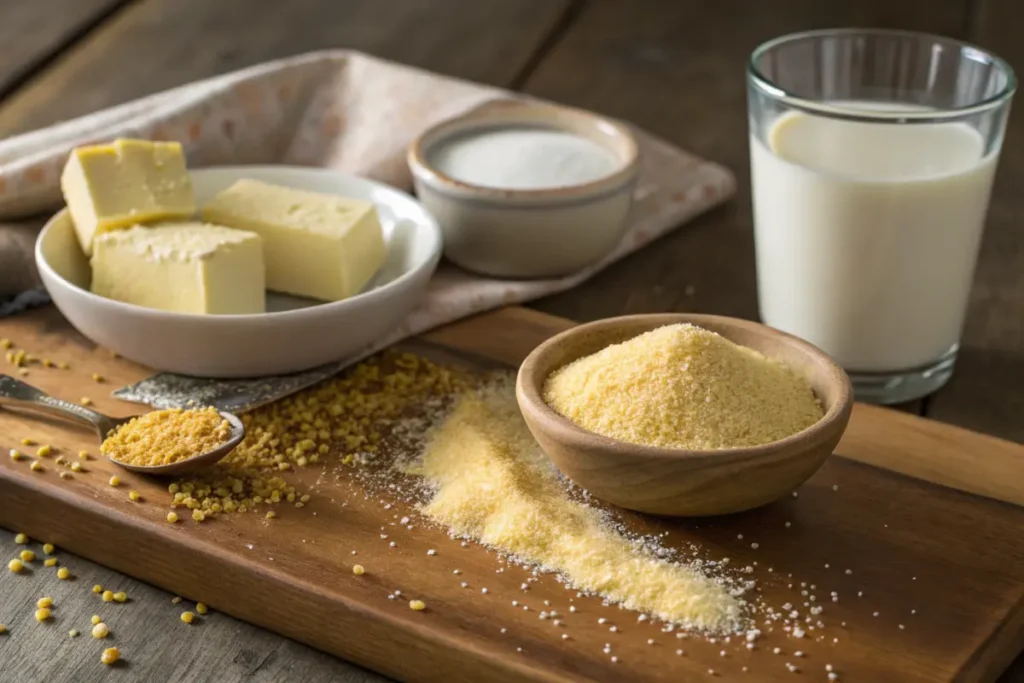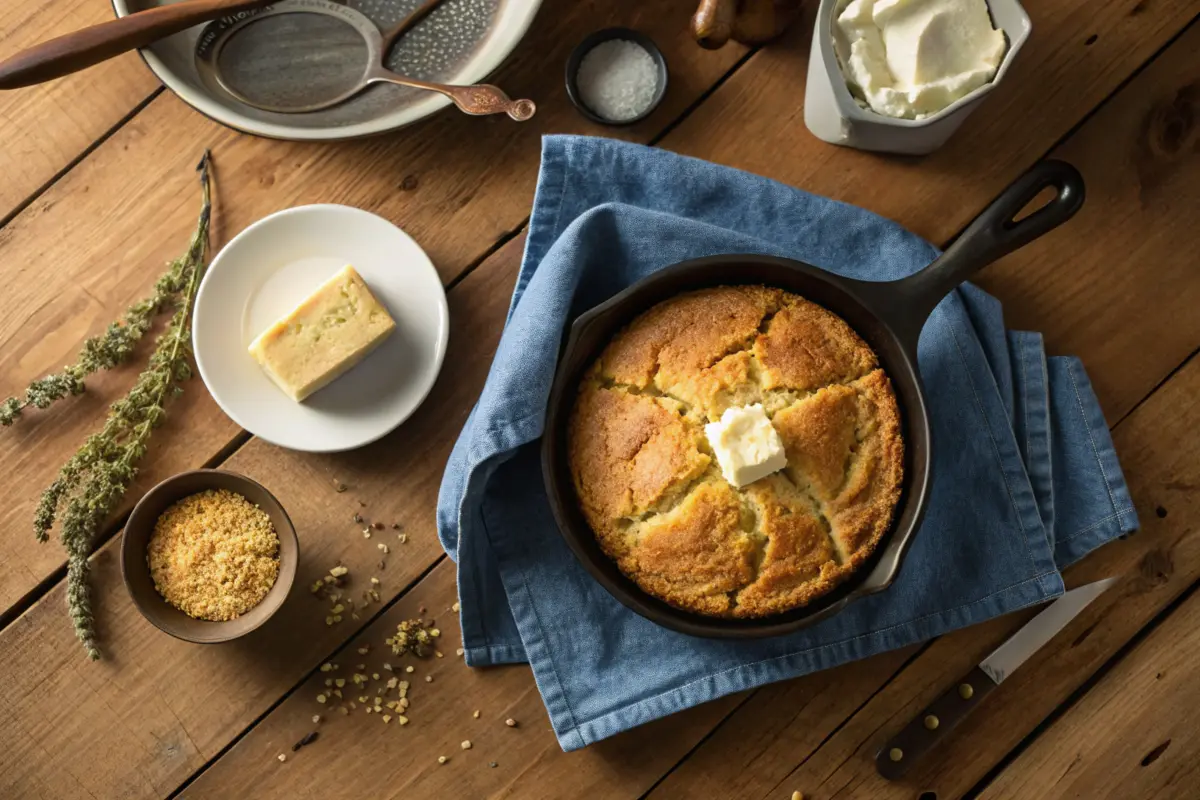Ever wondered why that Southern cornbread you’ve tasted is so different from what you might get elsewhere? It’s a culinary mystery, almost, and at its heart lies the question: Why do southerners not put sugar in cornbread? This article dives deep into that question, exploring the historical roots, regional differences, and cultural significance behind the savory, unsweetened Southern cornbread that is a staple in so many homes. We’ll unravel the secrets to what makes it truly “Southern” and why adding sugar is just not part of the tradition. We’ll journey through cornbread history, the ingredients, and the debate that’s sparked across kitchen tables for generations. We’ll also look at how cornbread traditions are passed down, and how modern tastes clash with these time-honored recipes.
The Southern Cornbread Identity: A Historical Perspective
The Role of Corn in Southern Culinary History
The story of Southern cornbread begins, quite simply, with corn. After all, this grain was abundant and, for many, a lifeline. Corn wasn’t just a food source; it shaped the very fabric of Southern cuisine. Moreover, it dictated what families would eat, how meals would be prepared, and even how communities would come together. For centuries, before even wheat became widespread, corn was the king of crops, providing the bulk of what people ate. Consequently, different ways to prepare corn emerged over the years, with recipes varying widely based on available ingredients and resources.
Defining “Southern” Cornbread: A Focus on Savory Flavors
When we talk about ” Southern ” cornbread, we aren’t just talking about a baked good. We’re talking about something that is decidedly savory. Unlike its sweeter counterparts that may be found elsewhere, this version has a flavor profile that is meant to complement hearty Southern meals, like beans, greens, and stews. Therefore, the savory nature isn’t accidental; it’s intentional. The focus has always been on the natural taste of corn, amplified by simple ingredients like salt and buttermilk, instead of masking it with sugar.
Early Cornbread Recipes: No Sugar Required
If you look back at old cornbread recipes, particularly from the Southern regions, you’ll find a striking consistency: the lack of sugar. The very earliest iterations didn’t use much in the way of sweeteners, and that approach stuck, becoming ingrained in Southern culinary identity. So, it wasn’t a conscious decision to leave out the sugar; sugar just wasn’t a regular part of the mix. It wasn’t a snub to sweetness, either, it just didn’t fit what was needed to make the food. Consequently, the focus became to enhance the corn’s natural flavor rather than cover it up.
Poverty and the Availability of Ingredients: Impact on Cornbread
There’s an important socioeconomic piece to this puzzle, too. Poverty, during certain periods of history, meant certain ingredients were just hard to come by. For instance, sugar was a luxury that many could simply not afford. Therefore, cornbread was made with what was readily available: cornmeal, water, salt, and perhaps buttermilk if a family was fortunate. As a result, the tradition of unsweetened cornbread became deeply rooted. Furthermore, it became a testament to resourcefulness and an essential part of the Southern identity.
The Debate Over Sweeteners in Cornbread: Regional Differences
Northern vs. Southern Cornbread: A Tale of Two Styles

The great cornbread divide often comes down to geography, specifically the North versus the South. Moreover, while Southern cornbread prides itself on its savory profile, its Northern counterpart often embraces sweetness. Consequently, what might be considered standard in one region could be seen as completely out of place in another. This is not just a minor difference; it’s a fundamental distinction that reflects differing taste preferences and culinary traditions. It’s why you hear folks arguing passionately about the “right” way to make cornbread—it’s personal!
How Adding Sugar Changes Cornbread’s Texture and Taste
The simple act of adding sugar to cornbread has a dramatic impact. Why do southerners not put sugar in cornbread? Well, for one, the addition of sugar creates a cornbread that tends to be more cake-like in texture, rather than the crumbly, almost coarse texture associated with traditional Southern versions. Furthermore, sweetness masks some of the subtle corn flavor that southerners typically appreciate. Therefore, you end up with a completely different product, one that, while tasty, deviates from the intention of savory cornbread.
The Impact of Cultural Preference on Sweetness in Cornbread
Cultural preference plays a huge role in this debate. Why do southerners not put sugar in cornbread comes down to what tastes they’ve grown up with and value. For many in the South, cornbread is meant to be a supporting character, a side that compliments the savory main dishes. Therefore, its flavor is intentionally not sweet, enabling it to harmonize with stews, greens, and grilled meats. Moreover, generations have shaped these taste buds, leading to strong opinions on what cornbread should and should not be.
Why Sweet Cornbread Isn’t Considered “Authentic Southern “
If you were to ask a Southern cook about sweet cornbread, you’d likely get a raised eyebrow or two! For most, sweet versions are simply not considered “authentic”. Why do southerners not put sugar in cornbread is almost a matter of pride, a marker of their culinary heritage. Furthermore, It’s about more than just a preference; it’s about upholding the tradition of a savory cornbread that has been a part of Southern tables for centuries. Therefore, offering a sweet cornbread at a Southern gathering might just be a culinary faux pas!
Why Southerners Specifically Avoid Sugar in Their Cornbread
The Intended Flavor Profile of Authentic Southern Cornbread
The goal of authentic Southern cornbread is to highlight the natural taste of corn, creating a savory canvas for other flavors. Consequently, there is no place for sweetness to distract from the pure, earthy corn essence. Therefore, the goal is never to make it a dessert-like treat but rather a humble, savory accompaniment. It’s all about celebrating the simplicity of cornmeal, seasoned thoughtfully with salt and enriched with fats.
Cornbread as a Complement to Savory Southern Meals

Cornbread isn’t just a standalone item in the South; it’s an essential partner in the Southern food ecosystem. It’s designed to absorb the juices from collard greens, scoop up beans, and generally make savory dishes even more enjoyable. Moreover, its slightly crumbly texture and simple flavor make it the perfect foil for these richer and more intense foods. Therefore, a sweet cornbread would clash with this symphony of savory flavors.
The Function of Cornbread in Classic Dishes
Consider dishes like chili, barbecue, and soul food—these Southern classics would not be complete without a side of cornbread. Furthermore, it serves not just as a palate cleanser but as a crucial element to the whole meal experience. It’s a blank slate that soaks up the flavors, binding everything together. That said, sweetness in this context would be jarring, throwing off the intended balance. Therefore, it’s clear why do southerners not put sugar in cornbread—it’s a functional choice rooted in its intended use.
The Importance of Texture: A Preference for Coarse and Crumbly
Beyond flavor, texture is paramount for Southern cornbread lovers. Why do southerners not put sugar in cornbread is partly driven by the impact on the final product’s texture. Southern cornbread should be somewhat coarse and crumbly, not cakey or soft. The addition of sugar tends to produce the opposite texture; hence, this isn’t an ideal situation. Therefore, maintaining the classic texture is just as vital as maintaining the classic savory flavor profile.
Sweetness Obscuring the Natural Corn Flavor
Ultimately, Southern cornbread is all about showcasing the unique, earthy flavor of corn. Adding sugar has the effect of masking that flavor, covering it up rather than bringing it out. This is a huge no-no for Southern cooks who believe the corn flavor is the very essence of cornbread. Moreover, they prefer their cornbread to taste like, well, corn! Consequently, the decision to avoid sugar stems from wanting that corn flavor to shine.
The Influence of Tradition and Culinary Heritage
Southern cornbread isn’t just a recipe; it’s a legacy. It’s been passed down through generations, a taste of home, a link to the past. Therefore, Why do southerners not put sugar in cornbread becomes less of a matter of preference and more of a nod to their culinary heritage. It’s a way of keeping the traditional cornbread alive and vibrant, just as it’s been for decades and even centuries.
Let me know if you’d like me to proceed with the next parts!
Ingredients Matter: The True Composition of Southern Cornbread

The Type of Cornmeal: Differences and Their Impacts
The foundation of any Southern cornbread is, of course, the cornmeal. Moreover, not all cornmeal is created equal. The type you use, whether it’s fine, medium, or coarse grind, dramatically impacts the final texture and even the flavor. For example, coarse-ground cornmeal will yield a more rustic, crumbly cornbread, while fine-ground will produce a slightly smoother texture. Consequently, choosing the right cornmeal is the first step to making authentic Southern cornbread, and often southerners will have strong opinions on which they prefer.
Fat: The Key to Moisture and Flavor in Cornbread
Fat plays a vital role in creating a delicious, moist cornbread. In traditional Southern recipes, this often comes in the form of lard or bacon grease, adding another layer of flavor that just can’t be achieved with other fats. Furthermore, this choice of fat doesn’t just contribute to moisture, it also imparts a savory depth that’s a hallmark of the Southern style. Therefore, it’s clear that the type of fat is as important as the type of cornmeal used. The correct fat content helps cornbread to stay moist.
Buttermilk vs. Milk: The Battle for Tang
Buttermilk is another key ingredient in many Southern cornbread recipes. However, if it isn’t available, sometimes milk is used, but that changes the flavor. Buttermilk not only adds moisture but also brings a tangy flavor, contributing to the depth of taste. Moreover, this subtle tanginess is a welcome addition that counterbalances the richness of fat and the earthiness of corn. Consequently, while milk can work in a pinch, buttermilk is often the first choice for its specific flavor contribution.
Salt: The Unsung Hero of Southern Cornbread
While sugar is purposely left out, salt is absolutely essential. It might seem like a simple ingredient, but it’s pivotal to bringing out the natural flavors of the cornmeal and the other ingredients. Furthermore, salt does more than just make the cornbread taste flavorful; it balances the taste and prevents it from being bland. Therefore, the savory taste relies not only on a lack of sweetness, but on the proper seasoning.
The Optional Addition of Baking Soda and Baking Powder
Some Southern cornbread recipes will include baking soda or baking powder, or a combination of both. These leavening agents provide the lift needed to make the cornbread light and airy. However, they’re not always included and, when they are, the amount used varies according to the preferred texture. Therefore, whether these are included and how much depends on the exact desired result.
The Absence of Sugar: What Ingredients Provide Depth
Why do southerners not put sugar in cornbread? Well, it’s not about lacking flavor, it’s about using other ingredients to provide it! The absence of sugar means you have to rely on ingredients like salt, fat, and buttermilk to bring the cornbread to life. Consequently, the unique blend of ingredients together create that distinct savory flavor profile that Southern cooks aim for, showing how each component has its part to play. For more delicious savory recipes, check out our other recipe articles.
Beyond Taste: The Cultural Significance of Savory Cornbread
Cornbread as a Symbol of Southern Identity
More than just a side dish, cornbread is a symbol of Southern identity and heritage. It’s something that connects generations and ties southerners to their past. Furthermore, the simple act of making and sharing cornbread is a way of embracing their culture and traditions, a sort of culinary flag. Therefore, every bite carries with it the stories of home, family, and Southern life.
Cornbread and Its Role in Southern Hospitality
Cornbread is an integral part of Southern hospitality. It’s a warm welcome, a sign of care, and a dish often shared with guests. Moreover, offering a plate of freshly baked cornbread is a classic gesture of generosity in Southern homes, a way of making folks feel welcome. Consequently, its simplicity and warmth make it a staple of Southern gatherings and feasts.
Family Recipes and the Passing Down of Tradition
Many Southern families have their own unique cornbread recipes that have been handed down through generations. Furthermore, these recipes aren’t just instructions; they are family stories, each ingredient a memory. Therefore, the act of making cornbread is often as much about honoring the past as it is about enjoying a meal.
The Importance of Culinary Authenticity
For many southerners, culinary authenticity is of the utmost importance. It’s about making things the way they’ve always been made, using the same ingredients and techniques passed down through the years. Why do southerners not put sugar in cornbread? Because it simply isn’t part of that authentic process. Moreover, preserving this culinary heritage is a way of staying connected to their roots.
The Modern Day Debate and Reinterpretation of Cornbread
Despite the strong tradition of savory cornbread, modern tastes and interpretations are starting to challenge these conventions. Consequently, some cooks are experimenting with new ingredients and techniques, questioning what cornbread can be. However, while change is inevitable, the core principles and savory character of Southern cornbread are likely to endure.
Cornbread Controversies: A Deep Dive Into the Variations
The Impact of Modern Taste Preferences and Regional Differences
While traditional Southern cornbread remains a staple, modern taste preferences and regional differences are beginning to introduce variations to the cornbread landscape. Consequently, you might find a touch of sweetness creeping into some cornbread recipes, especially outside of the South. Furthermore, this reflects a broader trend of culinary fusion and the blending of different flavor profiles. Therefore, the clear distinction between savory and sweet cornbread isn’t as clear cut as it once was.
Adding Sugar or Not : Exploring the Spectrum of Cornbread
The core question, Why do southerners not put sugar in cornbread?, highlights a very clear divergence. But, beyond that, there’s a whole spectrum of cornbread experiences that exist today. Moreover, some cooks might add a tiny bit of sugar, while others use honey or other natural sweeteners in small amounts, not enough to make it cakey but enough to make it sweeter. Consequently, this willingness to experiment reflects a shift from strict adherence to tradition to a more fluid approach to cooking.
Variations : A Look at Regional Ingredients and Methods
Beyond just the sugar question, regional variations in cornbread can be seen in other aspects of the recipe as well. Furthermore, some cooks add cheese, some use different types of cornmeal, and others use a different style of baking like cast iron or oven methods. Consequently, these variations create different textures and flavor profiles, contributing to the rich diversity of cornbread across different regions.
Is there a place for sweet cornbread?
While traditional southerners might turn up their noses at the idea of sweet cornbread, there definitely exists a place for this variation of cornbread. Moreover, in many regions it’s the preferred recipe for cornbread. Consequently, the argument boils down to preference, and the savory vs sweet battle is something that can be enjoyed by everyone.
Cornbread, a Culinary Frontier : Exploring new variations
The world of cornbread continues to evolve, with new interpretations and adaptations emerging all the time. Furthermore, cooks are using unusual ingredients, experimenting with different spices, and adding other elements to create new styles of cornbread not typically seen. Therefore, despite its traditional roots, cornbread remains a culinary frontier where innovation is constantly expanding the possibilities.
Conclusion: The Enduring Legacy of Savory Southern Cornbread
Summarizing the Reasons for the Lack of Sugar in Southern Cornbread
In conclusion, why do southerners not put sugar in cornbread? The answer lies in a combination of history, tradition, and a focus on savory flavors. The Southern cornbread is a side, a tool to help complement the main meal, and not a dessert. Moreover, it is made to enhance, not mask, the natural taste of corn, hence no sweeteners are needed. Consequently, this approach is deeply ingrained in the Southern culinary identity.
The Importance of Preserving Culinary Traditions
Culinary traditions, like the making of savory Southern cornbread, are more than just recipes; they are a link to the past and a way to connect with our roots. Furthermore, these traditions provide cultural identity and a sense of belonging. Therefore, preserving these traditions is essential for maintaining cultural diversity and the richness of our foodways.
A Final Thought on the Timeless Appeal of Authentic Cornbread
Ultimately, the timeless appeal of authentic Southern cornbread lies in its simplicity and its connection to heritage. Moreover, it represents a cuisine that values the integrity of ingredients and the importance of tradition. Therefore, whether enjoyed with a plate of collard greens or a bowl of chili, savory Southern cornbread continues to be a beloved staple on many tables, and a link to a past that continues to be cherished.
FAQs: Addressing Common Queries about Southern Cornbread and Sugar
Why do Southern cooks avoid adding sugar to cornbread?
Why do southerners not put sugar in cornbread? This is a question many people wonder, and it comes down to the intended flavor and use of the cornbread. Traditional Southern cooks avoid adding sugar because they want to maintain the savory nature of the dish. Furthermore, this savory flavor is designed to complement other hearty meals, not compete with them by introducing unnecessary sweetness. Therefore, the absence of sugar ensures the focus is on the corn’s natural taste and how it pairs with other Southern classics.
Is it ever acceptable to add sugar to Southern cornbread?
Adding sugar to Southern cornbread is traditionally avoided, though some modern variations may include a slight hint of sweetness to suit personal tastes. However, authentic recipes remain sugar-free, as most Southerners prefer to preserve tradition. Acceptance of sugar varies based on individual preferences and context.
What are the main differences between Northern and Southern cornbread?
The key difference between Northern and Southern cornbread is sweetness—Northern cornbread is sweeter, often with sugar, while Southern cornbread is savory. Texture also differs, with Southern cornbread being coarser, often using buttermilk and lard, while Northern versions are finer and use alternative fats. These distinctions reflect their unique culinary traditions and tastes.
Can I use a sweet cornbread recipe for a traditional Southern meal?
Using sweet cornbread in a traditional Southern meal isn’t ideal for authenticity. Its sweetness clashes with savory dishes like collard greens and barbecue, disrupting the meal’s harmony. Savory cornbread remains the preferred choice for a true Southern experience.

